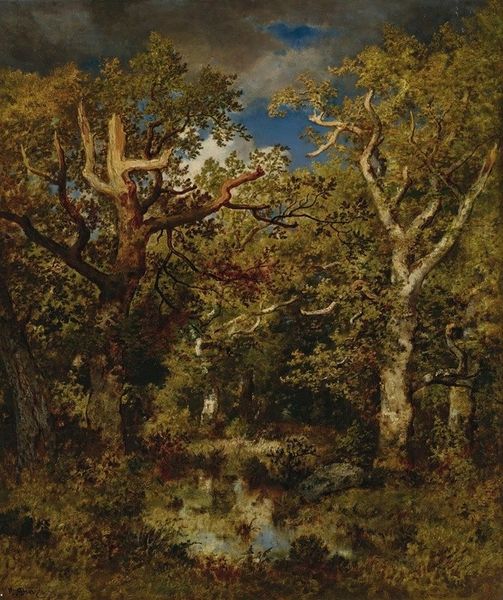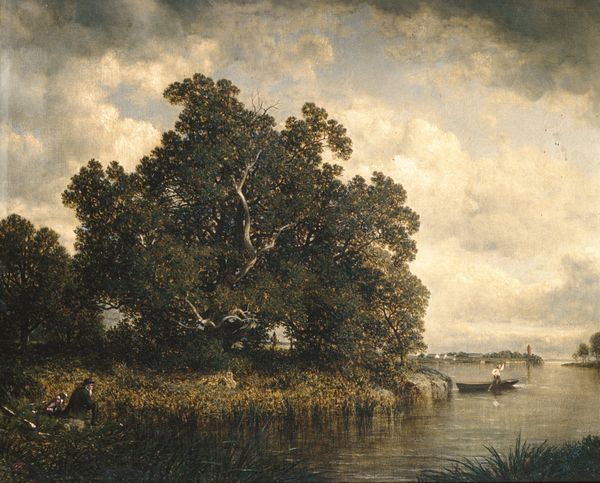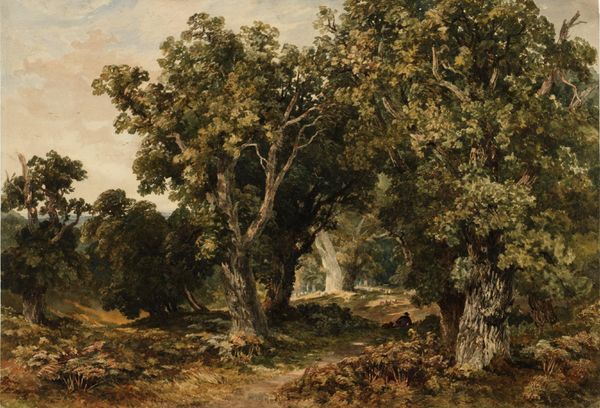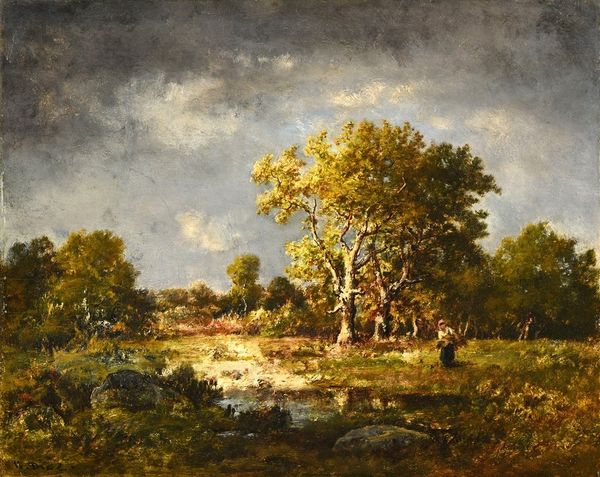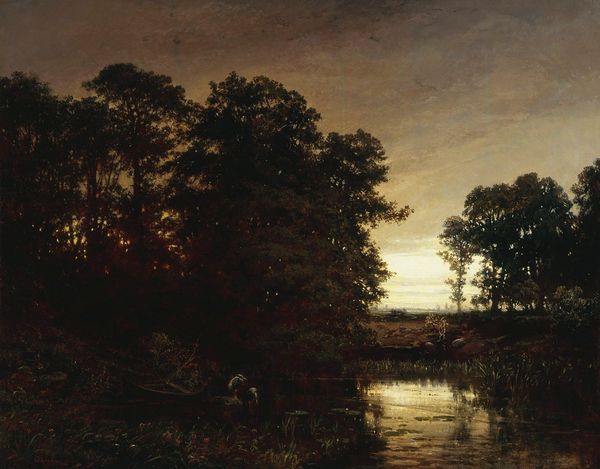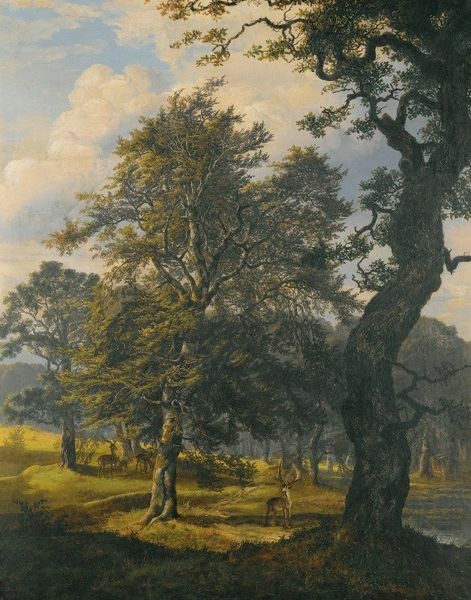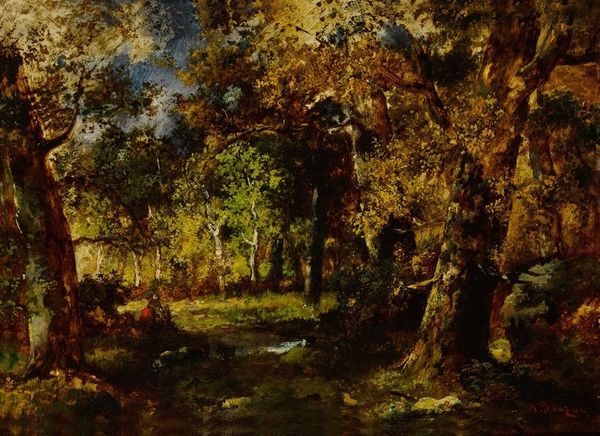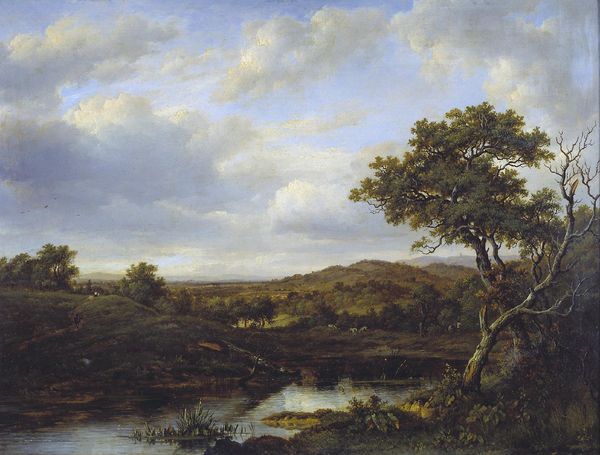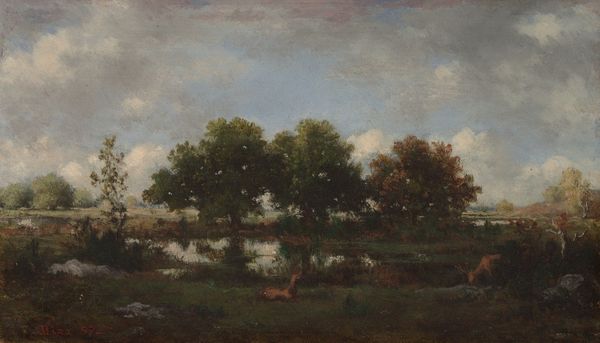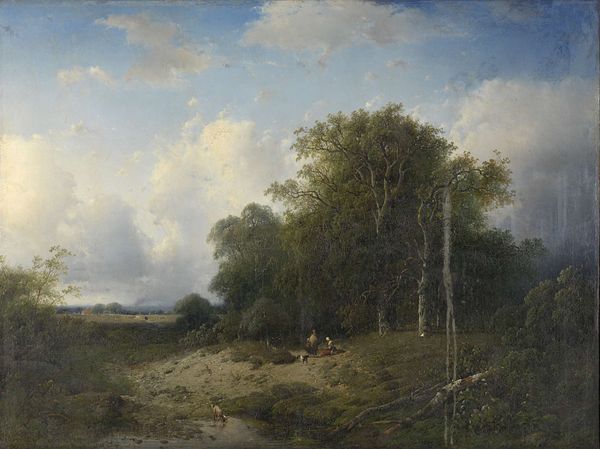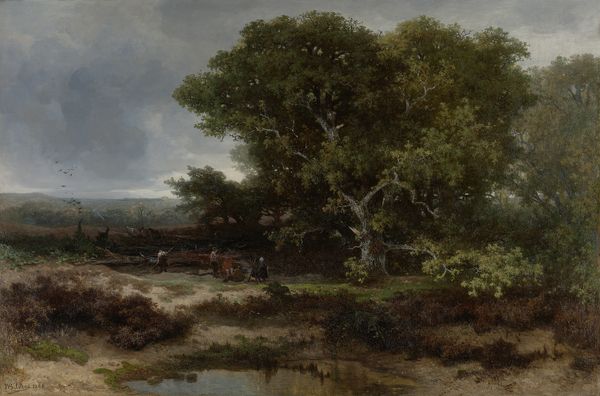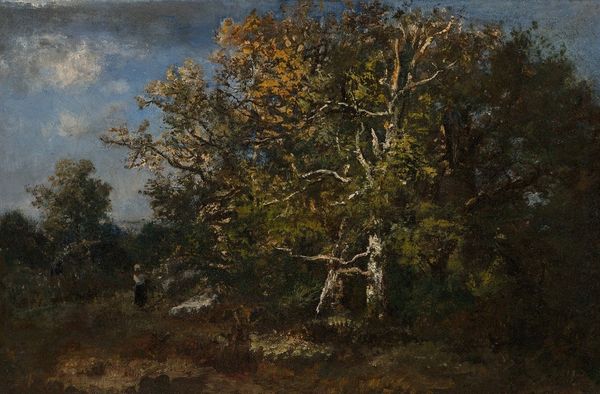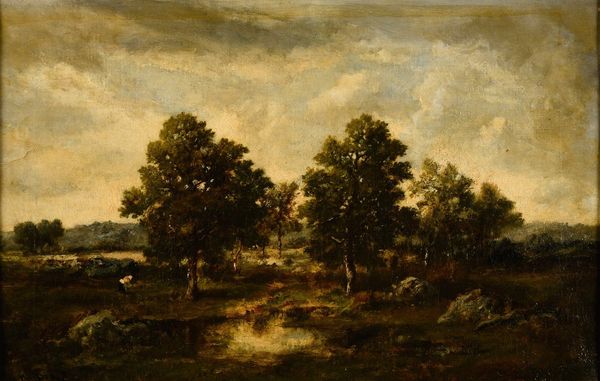
Copyright: Public Domain: Artvee
Curator: What a dramatic sky. It lends such an ominous tone to an otherwise peaceful forest scene. Editor: Indeed. This is "The Edge of the Forest at Les Monts-Girard, Fontainebleau" by Narcisse-Virgilio Diaz, painted in 1868. Diaz was known for his plein-air landscapes. This work in oil, very much captures the spirit of Romanticism. Curator: That makes sense. There’s a clear tension between the untamed power of nature – see those gathering storm clouds – and the almost bucolic, sun-drenched foreground. The work situates itself well inside the era’s discussions on the sublime. The solitary walker is invited to embrace these ideas too. Editor: Right, the painting emerged within a broader context of changing land use and industrial encroachment. Forests like Fontainebleau became refuges, not only for artists seeking inspiration, but also representing a longing for a simpler, pre-industrial existence. Curator: I appreciate how the dark palette pushes through the traditional boundaries that separated painting and theatre. There is also a more subtle, and interesting, interrogation of landscape and memory—of the collective understanding of an environment undergoing unprecedented changes. Editor: And if we think about the Salon system at the time, a work like this, showcasing direct observation and emotive response to nature, challenged the academic emphasis on idealized landscapes and historical narratives. Diaz used his art to promote, perhaps unconsciously, a different way of engaging with, and viewing the world around him. Curator: A vital dialogue. Thank you for guiding us to think further. Editor: A pleasure. The dialogue between art and social consciousness is continuous, revealing deeper perspectives on the ever-evolving relationship between art, the artist, and society.
Comments
No comments
Be the first to comment and join the conversation on the ultimate creative platform.
